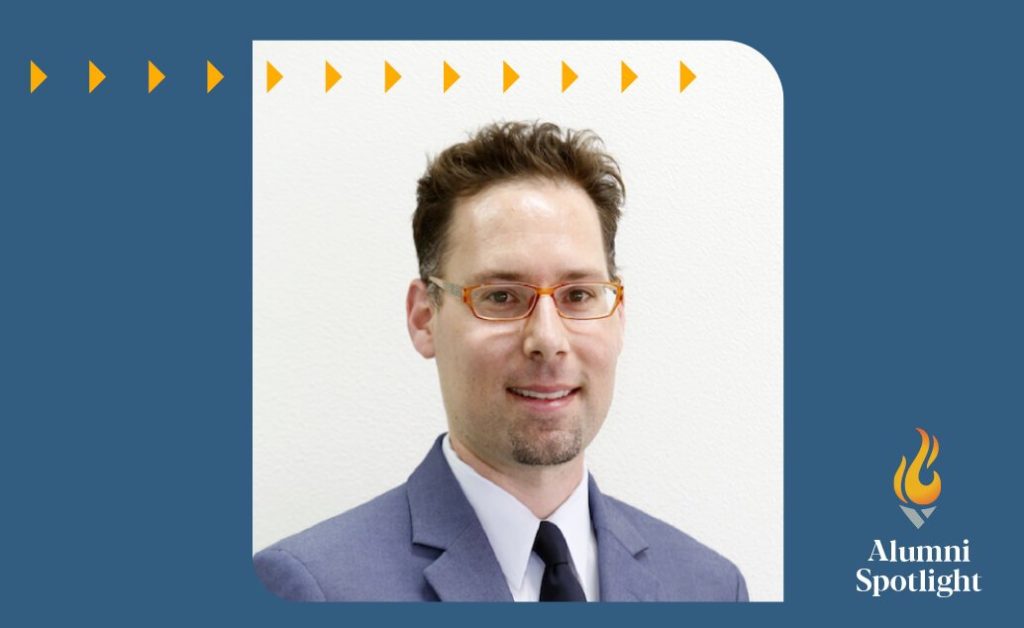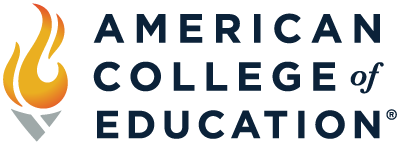
Jonathan Shachter is just now catching his breath.
After a whirlwind 14 months in ACE’s M.Ed. in Teaching English Learners program, the researcher and full-time lecturer turned his tassel in September 2017. As he paced toward spring, the alumnus continued to juggle part-time positions at universities in and around Japan before securing his carefully-plotted spot at Kyushu Sangyo University.
But just how did he clinch the new role? “I think the main reason I landed the job is because I had a very original research idea,” Shachter says, referencing his Capstone Experience, which analyzed speaking anxiety among Japanese English Language Learners.
Shachter’s instructors first encouraged him to submit the research to a journal in Japan. During the interview process, he highlighted his work for the Capstone, setting himself apart from the pack.
Now, as he works through his first term at the university, sees his work published, and prepares to present his research at the 30th Anniversary Conference of the Japan Association of College English Teachers, Shachter discussed what it means to have everything come full-circle.
American College of Education: What inspired you to dig deeper into Japanese ELL nervousness?
Jonathan Shachter (JS): When I first came to Japan about 10 years ago, I noticed that Japanese students were much more reserved than students I had taught from other countries. At that time, though, I had never been exposed to Japanese culture so I was just observing as a foreigner, not really observing as an educator.
While studying my M.Ed. at ACE, I became aware of studies being done in the field of Language Learning Anxiety (LLA). I think the main reason I started digging deeper is because I have encountered this issue of LLA in Japan firsthand. At times, Japanese students seem paralyzed during English-speaking performance activities.
ACE: I know you originally submitted your research as part of your Capstone. Did your work evolve at all as you prepared to send it to The Language Teacher?
JS: Absolutely. [Department of Teaching and Learning Academic Curriculum Director] Rebecca Wiehe helped me a lot during the capstone project. We had to choose a journal for submission and then learn about the formatting requirements. So when I submitted my capstone, I submitted one version to ACE and another to The Language Teacher (TLT).
It was my first time going through this process, so it was great to have a mentor. Even though it was a lot of work at the end of the M.Ed. program, I highly recommend students try and knock out a submission while you have that support.
I heard back from TLT almost immediately, and they informed me that the paper exceeded the word count; I began the process of cutting the paper down significantly.
After a second submission, I heard back from TLT and the editor of the journal told me that with a few more tweaks, the paper would be accepted.
Overall, the paper evolved into a very tight and concise explanation of my research.
ACE: And from that research, what did you find to be the biggest blind spots or biases that English-speaking teachers come with?
JS: During my time at ACE, I learned about natural apprenticeships that occur when you are a professional teacher. The idea of natural apprenticeships is that teachers essentially learn how to teach from their previous teachers. Natural apprenticeships can produce great teachers, of course, because some teachers will try to model positive behaviors they themselves have witnessed. There is a flip side to this coin, however, when you teach abroad or even in a different area of your own country. Most likely, your students will have been taught in styles very different from your own.
There is a trap in natural apprenticeships; teachers get frustrated when their students aren’t “getting it.” Teachers sometimes think: Why aren’t they understanding this? It must be their fault.
It took me a while to realize, but we have to really learn about our students before the important work can be done. Too many teachers try to impose their will and expect students to adapt to them. We have to try and meet our students at least halfway.
ACE: How did your education at ACE help shape the way you approach your classes?
JS: While I was a student at ACE, I had much more empathy for my students. I realized that it is really hard to be good at every class. As teachers, we are pretty self-centered and forget that our students are taking other classes besides ours. Now, I’m taking Japanese lessons and honestly, I’m a pretty bad student. This humbling process has made me much more empathetic.
ACE: What about the way you approach learning as an individual — how did ACE challenge or affirm what you were doing?
JS: Before studying at ACE, I had never heard of the term, “action research.” The teachers in the course encourage students to actively pursue an issue that they are personally experiencing in the classroom. This notion that I could conduct my own research based on personal experience was exciting. Before conducting action research, I wondered, Are teachers allowed to do this? For some reason, I thought we needed to get specific permission to investigate concerns we face on a daily basis.
Another thing is that, as teachers, we are often isolated and don’t have much time to speak with mentors. The program at ACE was great because I could meet teachers from all over the world. It was refreshing to hear teachers sharing various problems they were having.
ACE: And life after grad school — how’s that going?
JS: I’ve recently submitted a start-up grant application to the Japan Society for the Promotion of Science (JSPS). If I receive the grant, I can continue to track Japanese ELL speaking anxiety on a much larger scale using more advanced technology. To my knowledge, the studies I am proposing have never been done before. I’ll find out in August — fingers crossed!
Learn more about the M.Ed. in Teaching English Learners at American College of Education.

